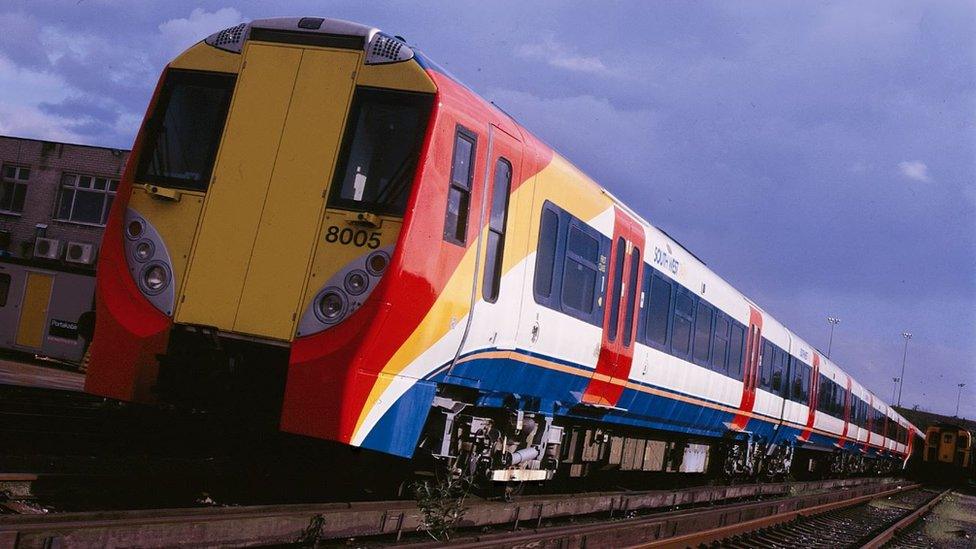South West Trains 'ice delays' anger commuters
- Published

South West Trains said disruption was expected until 15:00 GMT
Passengers on South West Trains have hit out after icy conditions caused delays and cancellations.
The rail provider said ice in Petersfield, Hampshire, was causing disruption between Havant and Guildford, in Surrey, on Friday.
Commuters took to social media to complain with some saying the firm should have been more prepared.
A spokeswoman said weather forecasts indicated temperatures would not be as cold as they were.
One rail passenger used the hashtag "kidnapped" after being stuck for three hours.
South West Trains had said disruption, which began about 05:00 GMT, was expected until 15:00.
It has since issued an apology, external and said delays were compounded due to signalling problems between Hilsea and Havant.
'Absolute embarrassment'
Michelle Palin said, external: "@SW_Trains hardly the coldest morning, and we all knew frost was coming, yet you once again can't cope!! Why not prepare the rails?"
Ben Gulvin also tweeted, external: "It's the first hint of ice how on earth is this not prepared for. Absolute embarrassment on yourselves."
Michelle Sparks said, external: "Left Havant on the 0451, still haven't reached destination. No idea where I am. Nearly 3 hrs stuck on the train. #kidnapped."
Stuck commuter and Norwegian national @torarne described the delays as "amusing" given he was "used to snow and ice".
"Hairdryers to de-ice the rails anyone?" he added, external.
"It's apparently the wrong kind of ice," joked, external Jamie Whiteman.
South West Trains said it "carefully monitored" the weather forecasts along with Network Rail.
"In the winter, we run special de-icer trains to keep lines clear and these are deployed when the air temperature is forecast to be below 2C," a spokeswoman said.
"In this case, the forecasts we received did not indicate these temperature levels."
She said the firm would review the forecasts and its response "to determine whether any additional preventative measures can be taken in future".

How does ice affect electrified rails?
By BBC transport correspondent Paul Clifton
All electrified railways are susceptible to ice.
Modern trains on the third rail network - which provides power to the trains - of southern England have lightweight collector "shoes", which pick up the power.
When the rail is icy the shoe can lose contact, shutting the trains down.
Where the power comes from overhead lines the cables become heavier too.
Coping with that extra weight has to be part of their design.
They are a bit more reliable but when they do break they take much longer to repair, causing greater disruption.
Railway engineers reckon there's little difference between the two systems in terms of resilience to extreme weather.
